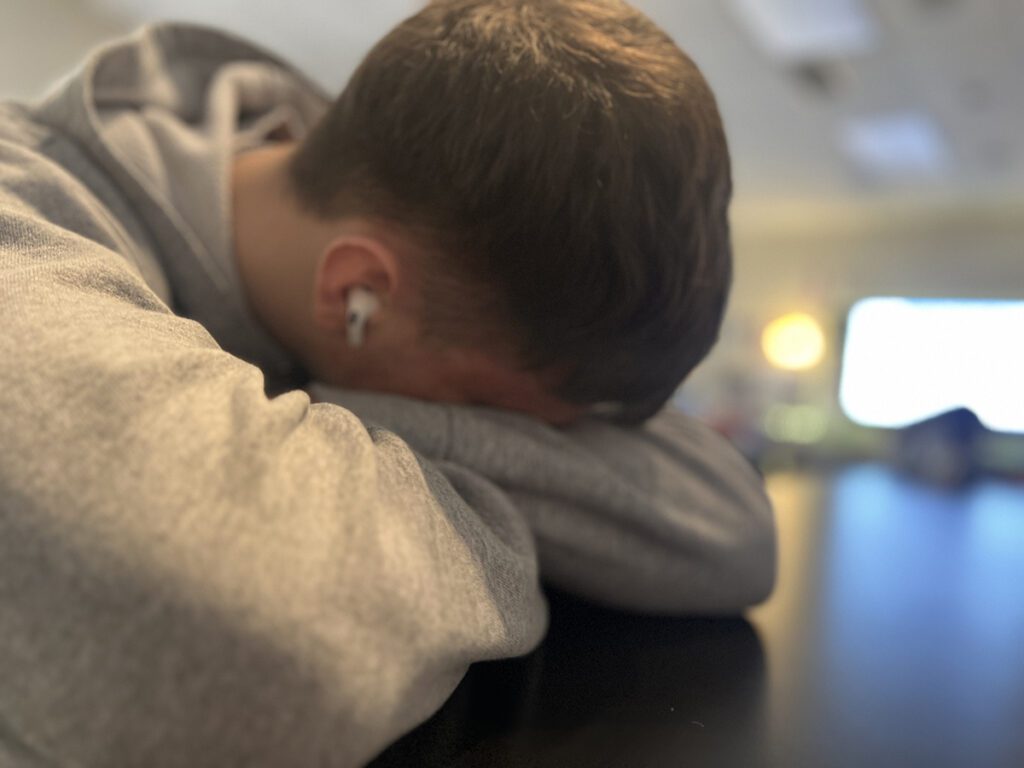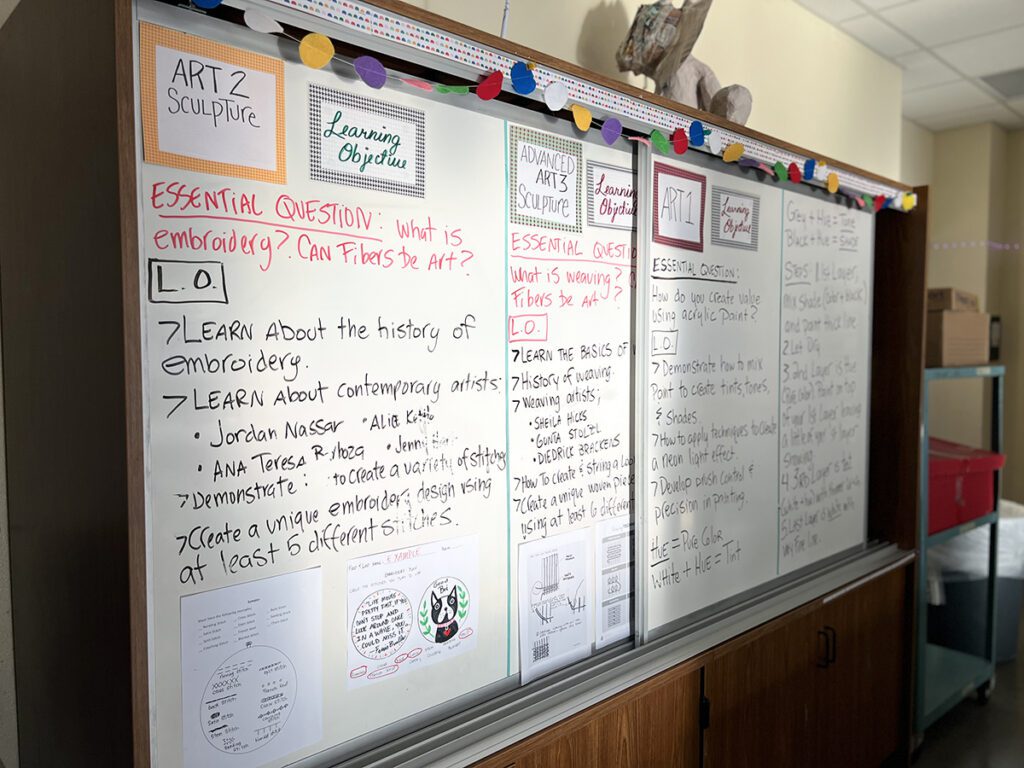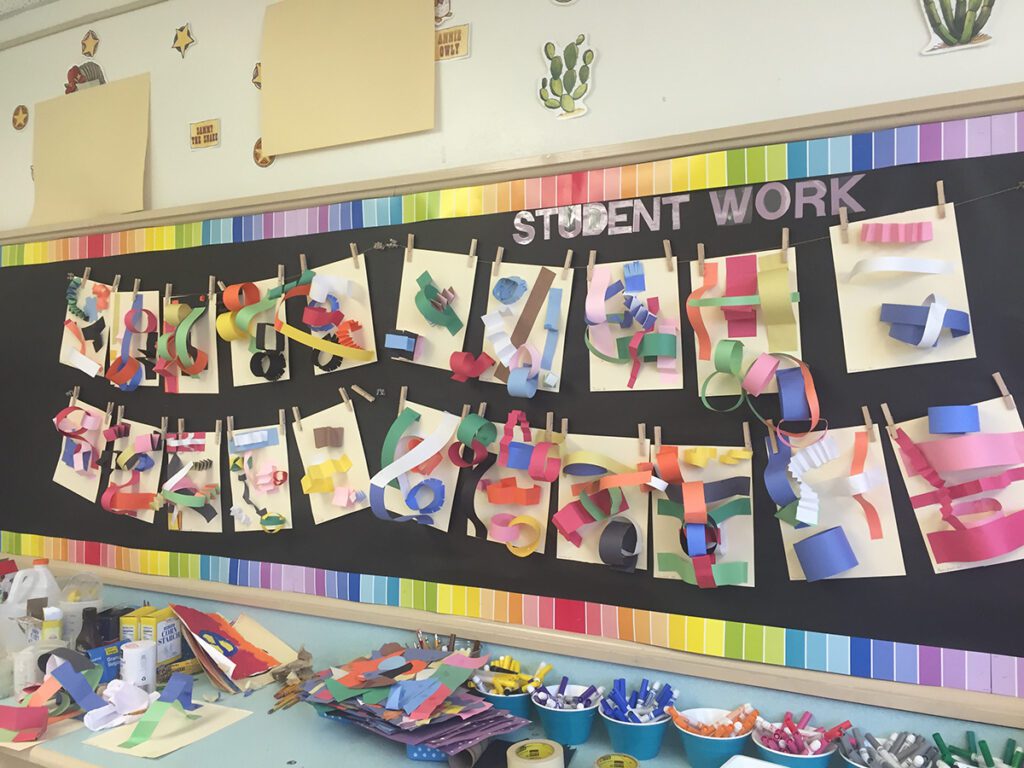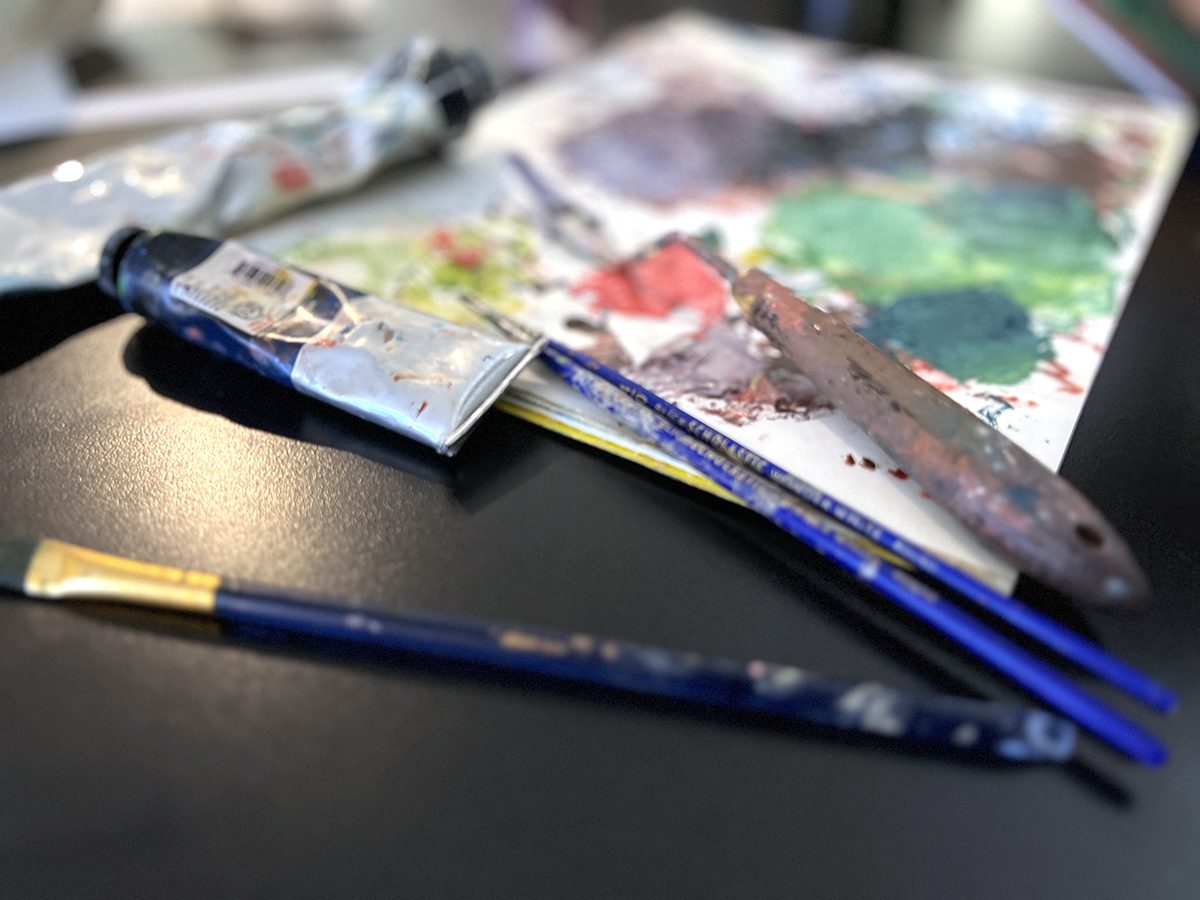Stepping into the world of the secondary art classroom is an exciting transition for elementary art teachers. However, it can also be nerve-wracking! As a high school art teacher, you probably have more students and preps per class period. Plus, you may be struggling with how to manage students who are physically bigger than you! If you’re wondering why the rainbows and glitter are no longer cutting it, don’t worry. There are tons of strategies and tips you can employ to foster respect in the art room and cultivate amazing artmaking.
Start with these words of wisdom about stepping into the world of high school art:
- 13 Things You Need to Know Your First Year of Teaching High School Art
- High School Mailbag: What Are the Wins and Challenges of Teaching Art?
- How to Plan Your First Day at the High School Level

Keep reading for what to expect when you take the big leap into the high school art room.
Say goodbye to your energetic helpers.
Most elementary students jump for joy when they enter your art room. They can’t wait to learn how to paint and make monster pinch pots. They greet you, grinning from ear to ear, excited to give you a high five! However, at the high school level, many students take your art class for mandatory credit… and not all of them will be thrilled about it. Furthermore, because students have headphones or earbuds glued to their heads, you’ll be lucky to get a “Hello!” back when you greet them.
Don’t get discouraged by the apathy! High schoolers still aim to please and many are happy to be in your classroom even if they don’t show it. The process to get them to be energetic helpers may take longer to implement but it will be more than worth it. Start by greeting them by name when they walk into your room (even if they “ignore you”). During studio time, ask them about their lives and take a real interest! The wonderful thing about teaching teens is you can have real conversations about real issues. They have opinions and once they’re comfortable, they love to share them. Leverage the connections you build to get them to help you! High schoolers want to be around adults they like and who genuinely care about them. If they like you, they will help you regardless of their preference for your class or art—even after graduation.

Shift your classroom management strategies.
The days of using call and responses are probably long gone. As mentioned above, your classroom management system will shift heavily toward relationship building. This may have been difficult at the elementary level due to the sheer amount of students you taught on a spread-out rotation. Luckily, in most circumstances, you will see your high school students daily or several times a week. This will allow you to regularly check in on their lives and see real progress and growth in their maturity and artwork. Relationships go two ways, so make sure you share about your life too! They love it when you can connect on memes, trending songs, and clothing styles.
Being a high schooler is hard—they are juggling intense courses, after-school jobs, caring for younger siblings, extracurricular activities and sports, and relationships. On top of all that, they are navigating how to find their voice, hone their belief system, and decide what to do with the rest of their lives. That’s some serious pressure! Many students love the art room because it’s a safe space where they can escape the chaos of their schedules and social lives and be themselves.
Check out these two resources to help you build meaningful relationships with your high schoolers:
- 5 Ways to Build Relationships With At-Risk Students
- 6 Truths Generation Z Art Students Wish You Understood Now
Revamp and readjust your curriculum.
Although your high school students are physically bigger, this may be their first art class in a long time (or at all!) You may need to start from scratch with foundational knowledge and skills, like how to use a ruler or hold a pair of scissors. Conversely, you will have students with advanced skills—sometimes better than yours! While cookie-cutter lessons are good for skill-building or quick exercises in between longer projects, take advantage of where your students are developmentally and dive deeper into artmaking. See how Clare S. exposes her students to advanced artmaking processes and mediums like figure drawing and acrylic masking in the video below.
Select a broad theme or idea you want your students to focus on for the year. Start with the end in mind and break that down into learning outcomes and objectives for each quarter, month, or week, depending on your particular schedule. High schoolers are learning how to form their own opinions and what those opinions are. Meet your students where they’re at and incorporate opportunities to explore deeper concepts in the curriculum.
Here are three tried and true resources to get student buy-in into your secondary curriculum:
- 7 Contemporary Artists to Support Advanced Students
- Teach Your Students to Use Art as a Tool for Social Advocacy
- 3 Strategies to Help Students Find Their Voice in the Art Room
Juggle multiple subjects and classes at the same time like an organized pro.
Teaching secondary-level classes often includes specialized classes by medium like sculpture, photography, or drawing. Some schools stack similar classes due to low enrollment rates or overpopulation. Stacking allows students to fit their desired classes into their schedules and many teachers choose to stack courses to keep their specialized classes. This can leave you juggling multiple lessons, mediums, and curriculums simultaneously.
If you’re overwhelmed, take a look at your contract. You may be asked to teach multiple preps but may have grounds to politely decline. If you’re committed to multiple preps, there are ways to approach this complex situation. Divide your period into groups by course. Alternate your schedule so one group/course receives instruction while the other works independently. Pre-load as much of your coursework as possible into an online learning platform so students can work asynchronously and access help when they need it. If you are lucky to have classes working with the same art mediums, tailor your assignments from foundational to advanced so students can pace themselves at the appropriate level. Additionally, incorporating skillsets like visual journaling allows all students within your classes to work on the same assignment with varying prompts or requirements.

Know that technology will be a blessing and a curse.
Many students in the secondary classroom have cell phones, tablets, or laptops. You may find yourself fighting for your students’ attention. While this is frustrating, you can choose to embrace the situation. Remember, students have grown up using technology every single day of their lives so they have a natural affinity to navigate screens. Teach them how they are digital citizens and show them how to use their technology wisely as a tool for research and artmaking. Social media is also a way to find common interests. Sharing real-world artists they have seen in their algorithm is a surefire way to increase engagement.
Studio time without screens is beneficial too! Many students are on screens all day in their other classes and at home. Art can be a time they look forward to because they get to use their hands and brains to create. Guiding students to have a healthy balance between technology and being present will go a long way in positively impacting their learning and mental health. Plus, many artists today toggle between the digital and physical worlds of artmaking. It’s helpful to highlight them and how they do it to provide students with options and possibilities!
Dive into these two reads to discover more ways to go screen-free in the art room:
- 3 Subtly Effective Ways to Manage Screen Time in the Art Room
- 13 Technology-Free Ways to Engage in the Art Room
Remember, your high school students are also very similar to elementary students.
Don’t let them fool you—high school students are still little kids at heart. They love high-fives, stickers, snacks, and classroom jobs. High schoolers also love assignments that aren’t so serious. We often associate play with our youngest learners but teenagers need time and space to explore their imaginations too! Because of all of the heavy responsibilities high schoolers are juggling, coming into the art room to create a paper airplane, make a popup card, or fiddle with plastic building bricks can be just the brain break they need.
For ways to incorporate play and simple lessons into your high school art room, check out the resources below:
- 12 Fun and Interesting One-Day Lessons for the Secondary Art Room
- Why You Should Let Your High Schoolers Finger Paint
- 4 Benefits of Play and 5 Ways to Incorporate Play in the Secondary Art Room

The transition from the elementary art room to the high school art room is a big one! Whatever you do, don’t lose your art teacher energy. In a teenage world where hormones are raging and little things feel like the end of the world, your consistency in care and curriculum will make an impact. Shift your classroom management to prioritize building rapport and having authentic, two-way conversations. Sprinkle in fun activities that promote play, spur the imagination, and provide brain breaks and small treats. Teach students how to use technology wisely as a tool and center your curriculum around big themes where students can express themselves and explore advanced processes and mediums. Before you know it, those timid students at freshman orientation will be submitting art portfolios and confidently walking across the graduation stage, giving you the biggest smile of gratitude ever!
What is the biggest lesson you learned when you made the elementary to high school switch?
Share your favorite secondary classroom management tip.
Magazine articles and podcasts are opinions of professional education contributors and do not necessarily represent the position of the Art of Education University (AOEU) or its academic offerings. Contributors use terms in the way they are most often talked about in the scope of their educational experiences.





